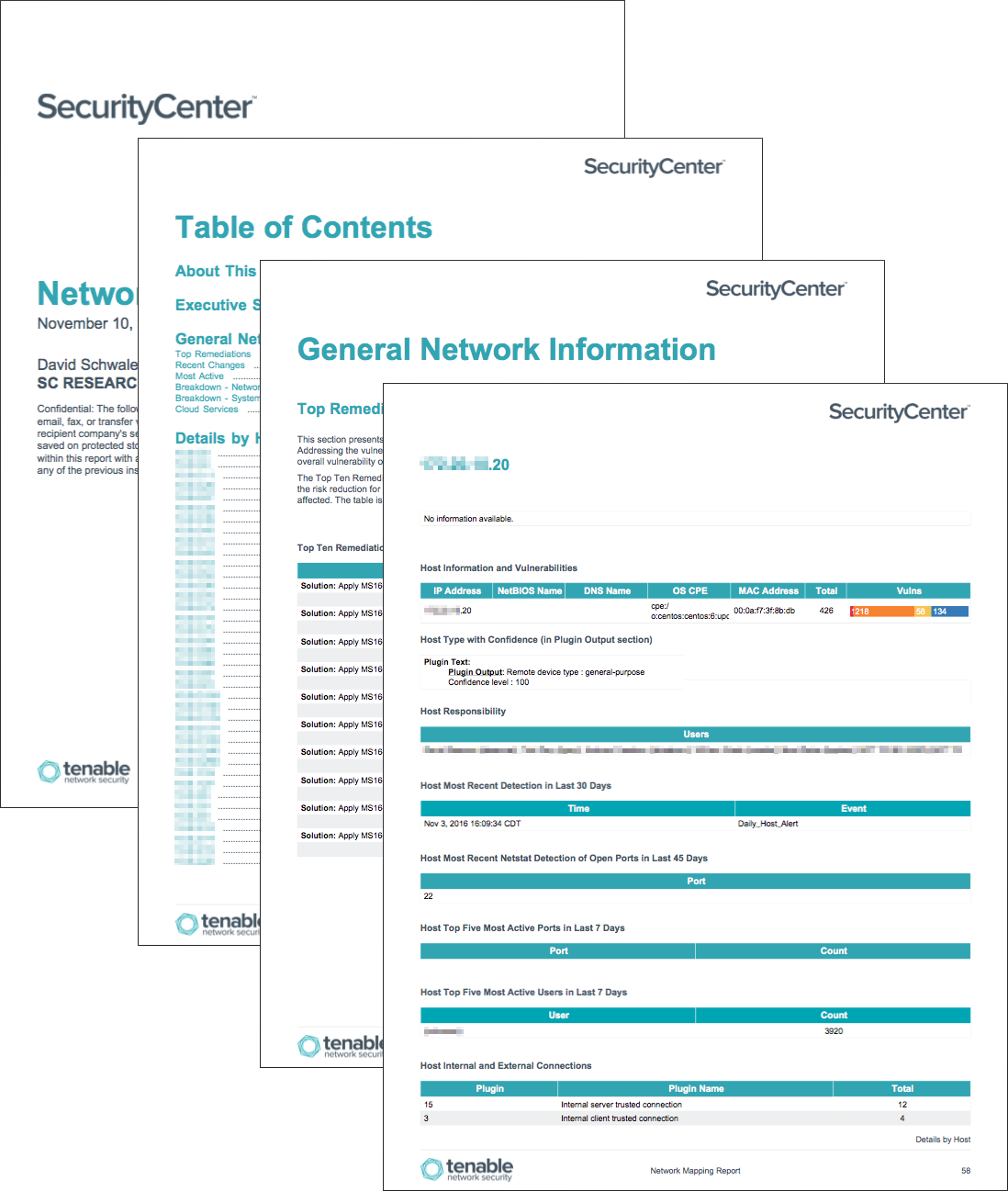by David Schwalenberg
October 1, 2014

Computer networks do not remain static. An organization that does not understand their network, what devices are on the network, the network connections, and who is talking to whom, will not be able to effectively manage or protect their network. If the inventory and activity on a network is not monitored, unauthorized devices and connections may go unnoticed. These unauthorized changes, no matter how well-intentioned, may lead to security gaps and vulnerabilities that can expose critical systems to attack and sensitive data to exploitation.
This report uses all aspects of SecurityCenter Continuous View (CV), including active scanning, passive listening, and host analysis. The information in this report can assist the organization in better understanding the network, tracking inventory, discovering network connections, and even detecting unauthorized systems and unusual activity.
What systems were recently added to the network? Which ports and users are most active on the network? Which hosts have the most internal connections to which other hosts? Which hosts have outbound external connections? This report can help answer these questions and more. Information on recent network changes, lists of systems by type, and network host details will assist the organization in maintaining accurate inventory and detecting rogue devices and unauthorized users. Information on the most active systems, ports, and users will assist in tracking normal activity as well as discovering any unusual activity. Information on which hosts are talking to which other hosts will assist the organization in detecting any unauthorized or suspicious connections.
Note that this report contains many lists of hosts. To keep the report from being overly long, the number of results displayed in these lists is limited. Because of this, a list may display only a portion of all the actual results. If more results are desired, the report can be easily modified. Consider also filtering on assets or subnets to produce a report more focused on particular sections of the network.
This report is available in the SecurityCenter Feed, a comprehensive collection of dashboards, reports, Assurance Report Cards, and assets. The report can be easily located in the SecurityCenter Feed under the category Discovery & Detection.
The report requirements are:
- SecurityCenter 4.8.2
- Nessus 6.9.0
- LCE 4.8.1
- PVS 5.1.0
- Tenable Network Monitor
- Tenable NetFlow Monitor
See also the related Network Mapping Dashboard.
Tenable SecurityCenter Continuous View (CV) is the market-defining continuous network monitoring solution, and helps organizations to know and manage their networks. Active scanning periodically examines systems to discover system information, vulnerabilities, and compliance concerns. Agent scanning enables detection and scanning of transient devices. Passive listening provides real-time monitoring to collect information about systems and vulnerabilities. Host data and data from other security investments is analyzed to monitor activity and identify new devices and users. SecurityCenter CV provides an organization with the most comprehensive view of the network, and the intelligence needed to manage the network in order to safeguard critical assets and information.
Chapters
Executive Summary - This report assists an organization in better understanding the network, tracking inventory, discovering network connections, and even detecting unauthorized systems and unusual activity. The executive summary gives a brief overview of the information presented in the report.
General Network Information - This chapter presents overall information about the network, including the top recommended remediations, recent network changes, the most active systems, ports, and users on the network, breakdowns of network systems, and those hosts on the network interacting with cloud services.
Details by Host - This chapter presents information for each host detected on the network, including when it was last scanned, who is responsible for it, when it was last detected, its most active ports and users, and whether it had any detected internal and external connections to other IP addresses.
Internal Host Connectivity - This chapter presents information on the passively detected internal connections between hosts on the network. For each host is displayed the hosts that connected to it, as well as the hosts to which it connected.